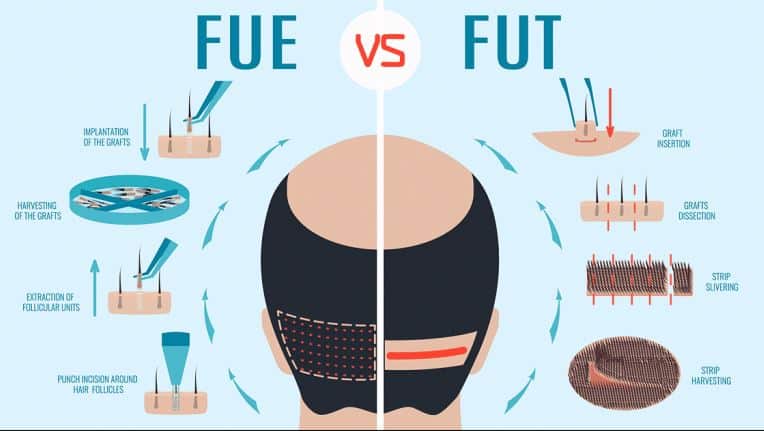Hair transplant techniques have evolved significantly over the years, offering effective solutions for individuals dealing with hair loss in Bharatpur. Here are the common types of hair transplant techniques used:
- Follicular Unit Transplantation (FUT):
- FUT, also known as strip harvesting, involves removing a narrow strip of scalp from the donor area, typically the back or sides of the scalp where hair is more resistant to balding. The strip is then dissected under a microscope into individual follicular units containing 1-4 hairs each. These follicular units are meticulously transplanted into the recipient sites on the balding or thinning areas of the scalp.
- Follicular Unit Extraction (FUE):
- FUE has gained popularity for its minimally invasive nature and lack of linear scarring. During FUE, individual follicular units are extracted directly from the donor area using a specialized punch tool with diameters typically ranging from 0.6mm to 1.0mm. Each follicular unit is extracted one at a time, leaving tiny, dot-like scars that are barely visible once healed. The extracted follicular units are then transplanted into the recipient sites using small incisions.
- Direct Hair Implantation (DHI):
- DHI is an advanced form of FUE that involves the use of a specialized tool called a Choi Implanter Pen. Unlike traditional FUE where the follicular units are extracted first and then implanted, DHI allows for simultaneous extraction and implantation of hair follicles directly into the recipient sites.
- Robotic Hair Transplantation:
- Robotic hair transplantation utilizes robotic technology, such as the ARTAS system, to assist surgeons in performing FUE procedures. The robotic system uses algorithms to identify and extract follicular units from the donor area with precision and efficiency.
- Hair Transplantation with PRP Therapy:
- Platelet-Rich Plasma (PRP) therapy is often used in conjunction with hair transplantation to enhance the growth and survival of transplanted hair follicles. PRP is derived from the patient's own blood and contains growth factors that promote tissue repair and stimulate hair follicle activity. During the procedure, PRP is injected into the scalp or applied topically to the recipient and donor areas to improve healing, reduce inflammation, and support hair growth. Combining PRP therapy with hair transplantation in Bharatpur can potentially enhance overall results and accelerate recovery.
Each hair transplant technique has its advantages and considerations based on factors such as the patient's hair loss pattern, scalp characteristics, and desired outcome. Consulting with a qualified hair transplant surgeon in Bharatpur is essential to determine the most suitable technique for achieving natural-looking and satisfactory results tailored to individual needs.





Comments